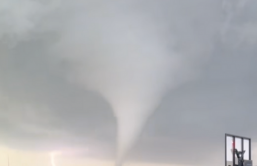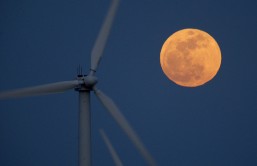NASA's Curiosity Rover has captured a video of the Martian moonrise.
The 86 frame video shows Mars' moon Phobos rising in the night sky, shortly after sunset, Space.com reported.
"You asked for the moon. Here it is! See footage from my Navcam of Mars' moon Phobos rising," NASA officials wrote via the rover's Twitter feed.
The 37 second-long video actually takes place over 27 minutes, the ring of light in the center of the frame is an artificial product of the camera lens.
Phobos is a fairly small moon, measuring at only about 14 miles across, but it's brother moon Deimos is even tinier. Experts believe the moons were actually once asteroids that got pulled in by the planet's gravitational pull.
Phobos and Deimos are made up of Type I or II carbonaceous chondrites, which usually make up asteroids, leading some scientists to believe they were not always moons.
Other scientists argue their stable orbit makes it unlikely they were once asteroids. The moons have a clean, circular orbit, which would be unusual for a non-lunar object.
Atmosphere could have slowed the moons down and stabilized them, but the thin air surrounding Mars makes the scenario unlikely.
The moons could have been created with a high-impact event (like Earth's moon) in which a collision caused a piece of Mars to get blown off.
Another theory is an impact involving Mars' original moon caused it to break up, leaving only two smaller pieces behind.
From Mars' surface Deimos looks more like a star then Earth's moon, it is about as bright as Venus appears to us.
Phobos orbits quite close to Mars, within about 3,700 miles from the planet's surface. The moon's surface is littered with debris believed to be caused by impacts on the Martian surface.
The smaller moon orbits Mars three times a day, flying across the sky once every four hours.
Mars was thought to be moonless until 1877, when American Asaph Hall spotted the two small objects.
WATCH:








